

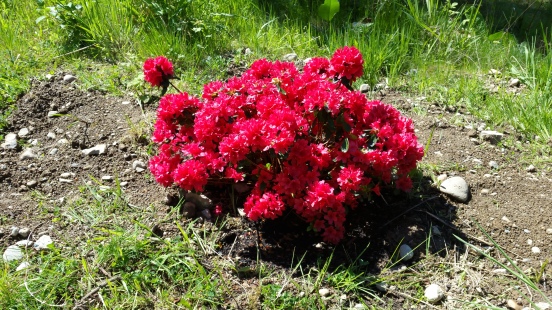







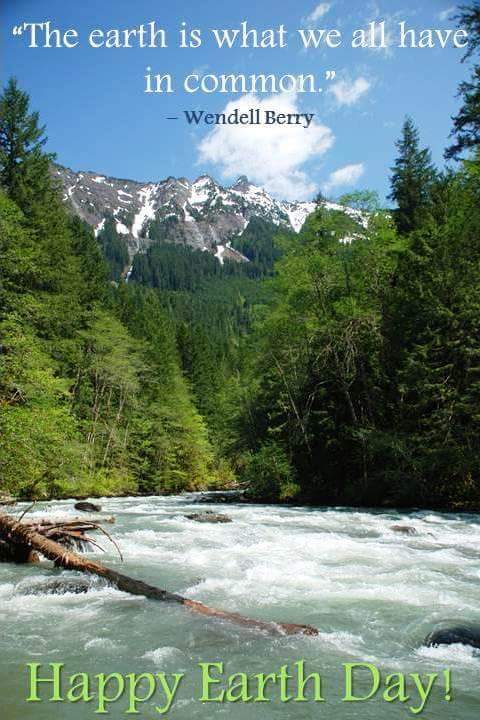
Here is a photo of a Happy Baby Tree!


Water! It is such a miracle when you have been living without it!!!
It actually happened in several steps. The well was drilled.

The pump and water storage tank were installed.

The pump needed 220 power. So we dug a ditch from the temporary power pole to the well. This is my daughter, Sarah, helping dig the ditch. The power cord is inside the pipe.


My Tiny House Trailer is here!!!

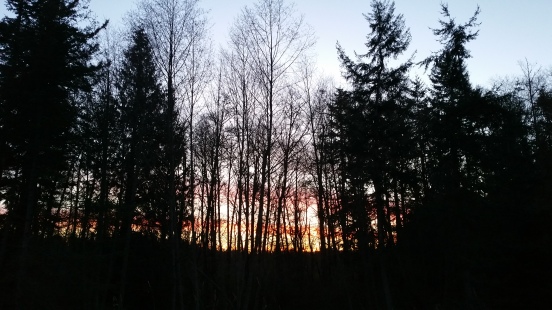
Sunrise through the trees. Beautiful, huh?

In some places on my property I went to plant baby trees, and found that Mother Nature had already planted some! How cool is that?


Wow! I went to the Conservation District Native Plant Sale on Saturday and bought 75 evergreen trees plus Salal for ground cover and wild Nootka Roses. I bought Douglas Fir, Western Hemlock, Sitka Spruce, Noble Fir, and Shore Pine trees. It is now Monday, and they are ALL planted. I am sore all over and have dirt under my fingernails that won’t come out. But I am so happy!!!

I wanted to buy some native Pacific Rhododendrons, my favorite flower. (Also the Washington State flower.) But they did not have any this year. I may go to a Native Plant Sale in another county to find some. 🙂
Salal is a beautiful native ground cover under the evergreens.


On Saturday morning I am going to the Native Plant Sale to buy a lot of seedling evergreen trees. I am so excited that I am already digging holes to plant them in. So far I have dug 46 holes for my new babies! I have a lot more places I want to dig and plant! I will watch this forest grow as I grow older. I hope to have lots of grandchildren to play in these woods!

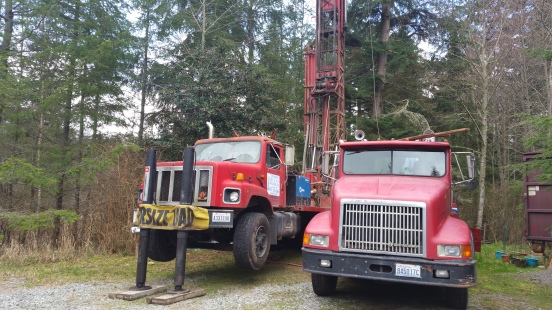
These well drilling trucks arrived today to drill my new well!!! How wonderful it will be to have water!!!
UPDATE: Today, February 25, 2016, the well driller hit water at 261 feet deep! WHOO, HOO!!!

I decided to build my own Tiny House on a trailer! I ordered the 26 foot long Low-Wider Trailer! With this type of trailer you can actually build the walls on the outside of the wheel wells! This gives an extra 11 inches of width inside Tiny House!

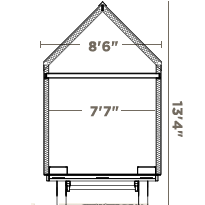
It will be quite a bit larger than the 20 foot long Tiny House I lost to my scumbag builder.

I am going to build the hOMe by Andrew Morrison. I will need to tweak the plans a bit because the hOMe is designed for a 28 foot long trailer.

I LOVE the stairs to the loft with storage underneath!

I LOVE the window seat!

I LOVE the cozy wood stove and the dog! LOL.
You can see more photos of hOMe at tinyhousebuild.com
In this post I continue my book report on the new book by Chris Martenson, PhD and Adam Taggart. I was pleasantly surprised about how good the rest of the book was, very wholistic and comprehensive.
The emphasis was not on how you and I as individuals could weather the storms coming, but rather how we can help to heal our world.
The authors explain that there are eight kinds of “Capital” that are all very important as the building blocks for resilience. The eight kinds of capital are Financial, Living, Material, Knowledge, Emotional, Social, Cultural, and Time.
FINANCIAL CAPITAL: The authors are very clear in stating that having a lot of money does not equal resilience. We need to make a “mind-shift” away from believing that “wealth” is how much money you have. The economic bubble will pop, and it will be worse than the crisis of 2008. If you have money to invest, buy timberland, farmland, fisheries, mineral ores, etc. The authors also suggest investing in precious metals, like gold and silver. They recommend taking possession of the gold and silver yourself, or have it stored somewhere you are certain is safe. They also recommend investing locally, within 10 miles of where you live, which helps your entire community to be more resilient.
LIVING CAPITAL: For most people our connection to nature has disappeared. Nature feeds us, clothes us, shelters us, and biologically we are a part of it. The natural systems we rely on are faltering. Nature has limits and humans are pushing past those limits. We need to change our relationship with nature from one that is destructive to one that is regenerative. We need to learn and practice the “Principles of Permaculture.” Natural systems are sustainable, providing their own food, and recycling their own wastes.
Living Capital is the water in our streams, lakes ponds, and underground aquifers. It is healthy ecosystems: soil, animals, birds, insects, trees. We can exchange our money for compost, fruit trees, berry bushes, bee hives, plants, gardens, seeds, etc. We can improve the soil around us, and increase pollinators and wildlife by planting the bushes they feed on. Humans can bring about incredible regeneration of nature. Using natural compost and no pesticides builds up nutrient rich topsoil. We can plant bushes that replenish the nutrients in the upper topsoil. This high-carbon layer of soil retains water better so less water is needed to grow food. And as we eat this organically grown food and work outside, our bodies become healthier.
The authors suggest that if we are not gardening type of folks, we can invest in and support organic farmers in our local communities.
MATERIAL CAPITAL: Buy tools, equipment, and products that are high quality, well-designed, and will last a long time. It is about value, such as buying a good solar power system, a solar water heater, a quality water pump, a durable pair of boots. Develop community by sharing your tools and equipment with your neighbors such as a tractor, log splitter, and a honey extractor.
The authors suggest having emergency supplies on hand, including food, water, a First Aid Kit, warm clothes, blankets, a hand-cranked radio, etc. They suggest some kind of self-defense plan, whether it is a big dog, pepper spray, or a gun.
KNOWLEDGE CAPITAL: Preparing for an uncertain future is not just about aquiring “things” but also learning some useful skills. Practical knowledge and the mastery of a skill will be essential. You can then barter your skills for food or other assets. Learn a skill that is based on your own passions, values and aptitudes. Set goals, and create a plan. Then share your skill with others through mentoring.
EMOTIONAL CAPITAL: Things will not go according to your plans. We need to be prepared to experience surprise, disappointment and stress, and to persevere no matter what obstacles we encounter. This is emotional resilience. For many people mastering stress and staying calm in difficult situations is related to a spiritual connection. Meditation, spending quality time in Nature, or other religious practices often help with emotional resilience.
SOCIAL CAPITAL: People need each other. We all have different strengths and weaknesses, and we rely on others to do things for us that we can’t do well ourselves. Deep interpersonal connections also bring fulfillment and meaning to our lives. Transitions through life are easier when we are part of a community, and have authentic relationships with other people. We can give and receive support when it is needed. When hard times come, people with networks of trusted friends and neighbors will fare the best.
CULTURAL CAPITAL: Culture is the collective aspects of life shared by the people around you. People in an area share a common language, way of dressing, customs, celebrations, traditions, beliefs and values. If you feel the culture in your area is not right for you, you can adapt to it or relocate to another place.
The authors believe that big cities are not good places to be in the coming economic hard times. During the disaster of Hurricane Katrina, the city of New Orleans disolved into a chaos of looting, lawlessness and murder. Economic hard times in Detroit had the same effect on that city.
Both of the authors have moved their families to rural areas with lots of small farms, and a pre-existing appreciation for local sustainability. The things they looked for included quality of the soil, climate and length of the growing season, water availability, population density, existing community organizations, crime rate, etc.
If you decide to stay where you are the authors encourage you to find like-minded people in the sub-cultures in your area. Who shares your values? This might include joining a volunteer organization, church, athletic club, art group, hiking group, etc.
TIME CAPITAL: We are headed towards a huge economic and ecological crisis, probably in the next two decades. We need to make time for resilience-building right now. The authors suggest just doing the next thing. Don’t get overwhelmed. Slow and steady wins the race.
People should be ready for their retirement pension plans to fail. Our public and private pension programs are terribly underfunded. There are not nearly enough funds to pay out the full pension amount promised to workers. To fill the gap, the government will need to raise taxes or place fees on people still working, or both. Retiree will get less than they were promised. Start to prepare now. Learn to live well at a lower expense level. Grow some of your own food. Preparing for the future begins now.